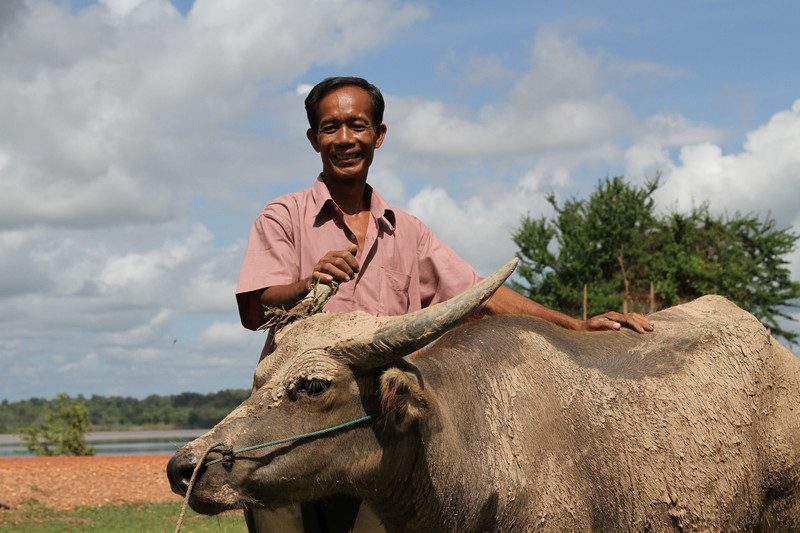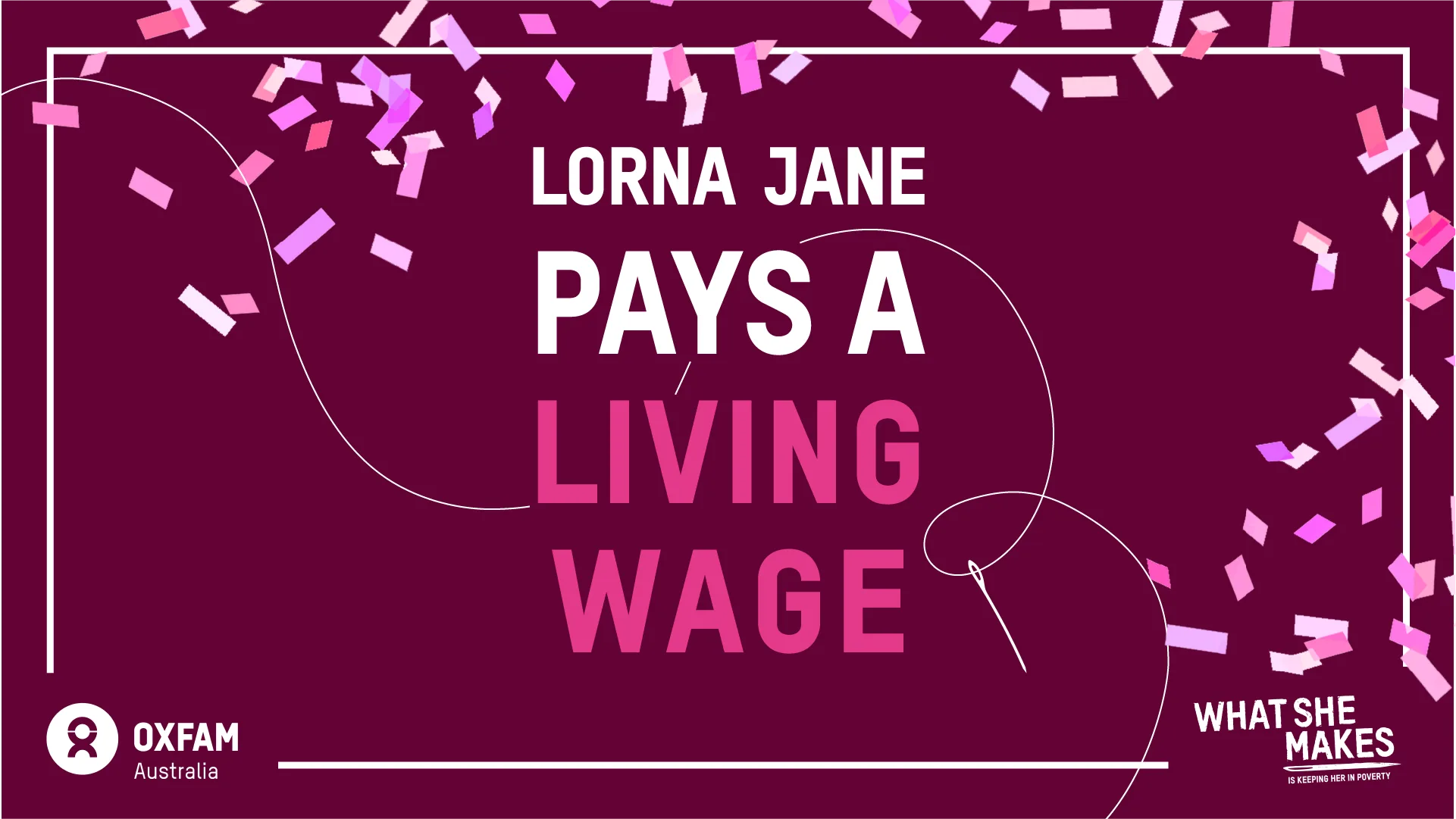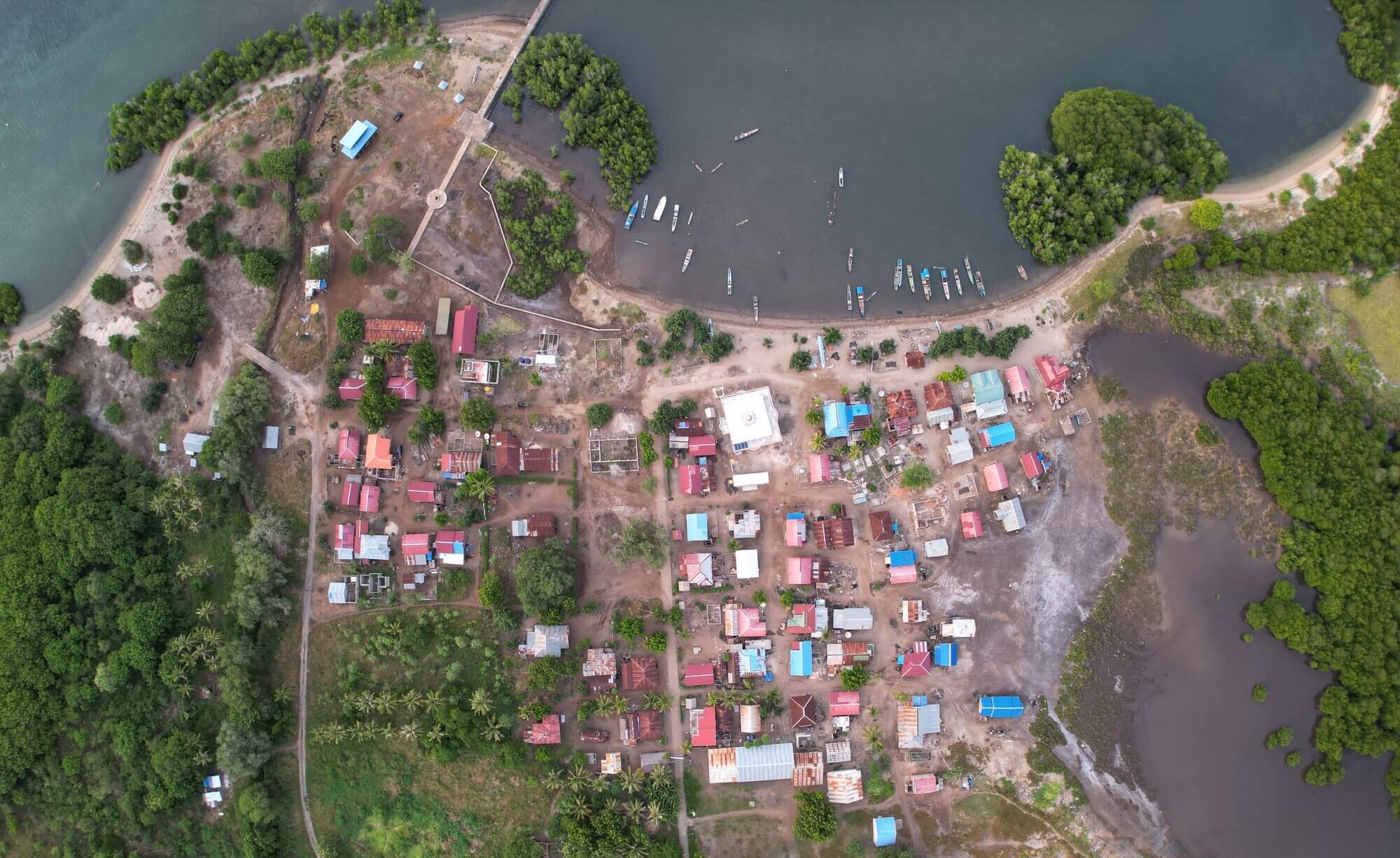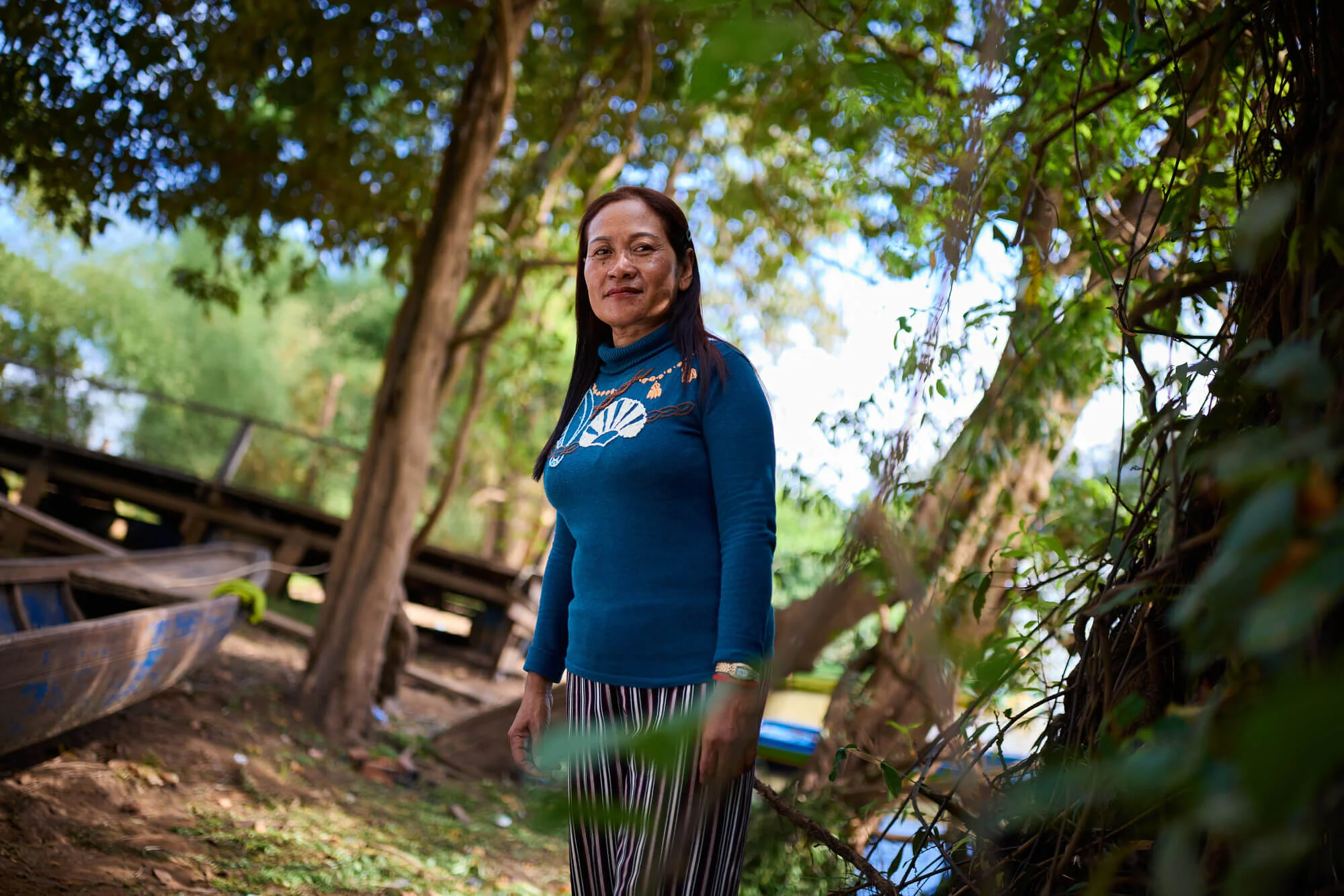By now, you’ve probably seen our short-and-sweet video explaining how the Oxfam buffalo bank works. (You haven’t? Check it out here.) Or perhaps you’ve read our interviews with Met and Sokim, two Cambodian villagers who’ve experienced first-hand how having a buffalo in the family can change lives. This time, it’s Suy Na’s turn to share his story.
Na (47) lives with his wife Bovy and their eight children in Damrey Phong village. Four of the kids are at school; two are still too young to attend. The family has been involved with Oxfam projects for many years, the latest of which is the buffalo bank. When asked about how he earns a living, Na replies: “My main occupation is rice farming, fishing, chicken- and buffalo-raising.” Sounds like he’s a convert.
Read on as Na tells his story in his own words.
Before the buffalo
Before the year 2002 my family was one of the poorest in the village. I did not have a buffalo or cow for rice farming. We needed to hire a buffalo from another family in the village with a high hire cost of 300kg of rice per season … I did not know about buffalo banks.
My children did not go to school regularly because we lacked money; we also had food shortages for about six months every year. So we needed our children to earn money and fish for daily food with us. So my children missed a lot of school and did not have much time for study. Sometimes my wife and I sold our labor as workers on a bridge or culvert construction. Sometimes my family members got very sick with malaria and we had to spend a lot of money on health treatment.
My family had a small house with many family members, a total of 10 people, because we did not have enough money to construct a bigger house. We did not have enough mosquito nets for everyone to sleep under. It was particularly hard during rainy periods.
The buffalo effect
I was selected as a buffalo bank project beneficiary in 2002 after community meetings for wealth rankings. I’d [already] participated in many meetings such as the buffalo bank concept; developing buffalo bank regulation, buffalo bank committee election and buffalo bank beneficiaries’ selection. I received one female buffalo from Oxfam Australia.
After I received the buffalo, my family had a buffalo for ploughing the farm without hiring from another family. I grow rice in all of my paddy land, which is 0.80ha. I receive a rice yield of 2,000kg per year without paying for the hire cost and pay only 50kg per year to the buffalo bank committee … My family has reduced food shortages from six months to three months.
A few years later, my female buffalo had a baby buffalo. Now my baby buffalo (a male) is four years old. Now we can plough the paddy with him.
I have built a bigger house than before. My communication with community people is improved. Now my children can go to school more often because my family has a suitable house and a buffalo for rice farming.
Oxfam in action
My family has been involved with Oxfam Australia since 1997. Through their training courses and awareness-raising, I understand about primary health care. My family sleeps under a mosquito net and we drink boiled water. When my family gets a disease we go to the health centre and consult with a doctor. I am planting vegetables around my house and in the home garden. I also do chicken-raising and fishing. I have vegetables and fish for eating. Sometimes I sell chickens or fish to get additional income. I spend the money to purchase food, material for constructing a new house, clothes, books and pens for my children to study.
Hopes for the future
In the future I hope to expand our land for farming, increase chicken-raising and sell my male buffalo to buy a female buffalo … I will take care of the female buffalo because it will have a baby to increase the amount of buffaloes in my family.
I want to improve the condition of my house and continue to participate with Oxfam Australia projects, such as SRI and rice banks.
Find out more
- Donate to our Buffalo Bank Appeal and you’ll be helping more people like Na.



